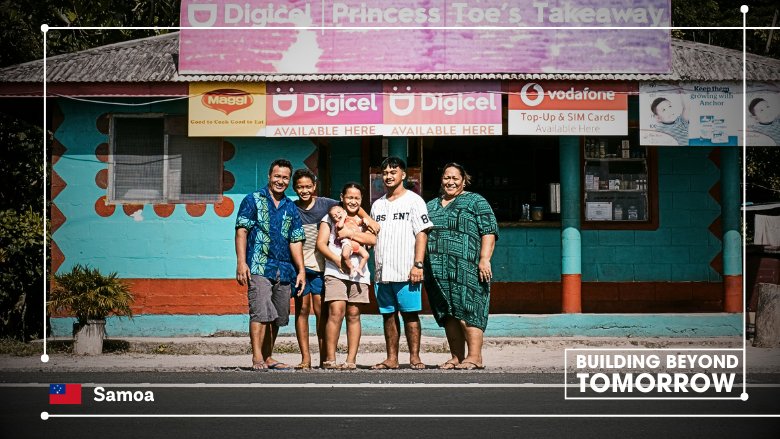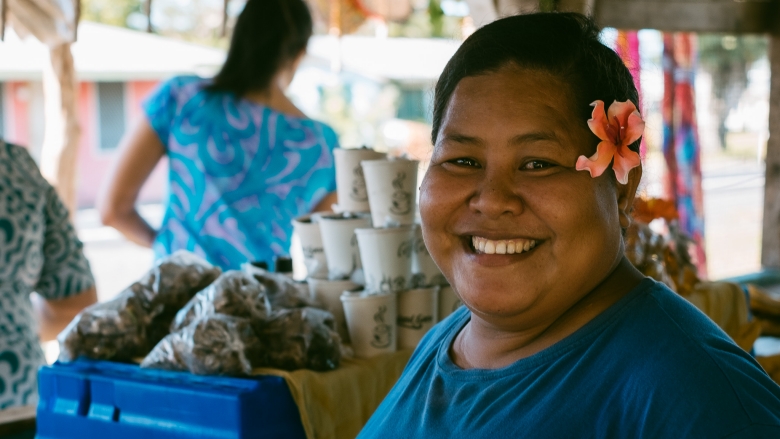Setu Timoteo is the proud owner of Princess Toe’s Takeaway Store in Utualli, on Upolo island, Samoa. His store, situated alongside the West Coast Road, which runs between the capital, Apia and the country’s international airport, is open from morning till after midnight, offers groceries, phone cards, and now, popular fried fish, chicken, and chips. “The secret of my business is my recipe … to make the chicken and fish fresh and delicious!” Setu shares with a laugh.
But it’s not just his secret ingredients that are helping his business boom. The location on the recently-upgraded plays a significant role. Previously, this crucial road suffered extensive damage from cyclones and storm surges. “When the wave came along, the wave came here … [it] pulled in all the stones from the road … and the road was broken,” Setu recalls.
The upgrades to the West Coast Road are part of the World Bank-supported Pacific Climate Resilient Transport Program, which is working in seven Pacific countries – including Samoa – to improve vital infrastructure and make communities more resilient to extreme weather events and climate change.
Sean Michaels, Senior Infrastructure Specialist for the World Bank, emphasizes the importance of this program.
“The countries in the Pacific region are possibly the most exposed to the effects of climate change and severe weather events...” said Sean. “It's a very difficult challenge for them. Some have been incredibly hard hit with devastating impacts resulting in loss of life, jobs and access to essential services such as schools and hospitals.”.
The program focuses on upgrading vital infrastructure like roads, jetties, ports and airports to withstand extreme weather, ensuring communities remain connected during disasters. The West Coast Road’s upgrade included improved drainage and enhanced protection from storm surges, benefiting everyone, including the young, elderly, and those with disabilities.
There is now a renewed confidence in the road, which is helping the community travel safely to work, school or to care for their family, even during extreme weather. Setu appreciates the added protection. “We were living with a lot of changes to climate change, but the sea wall is a good protection for us … doing that sea wall really saved us,” he said.


